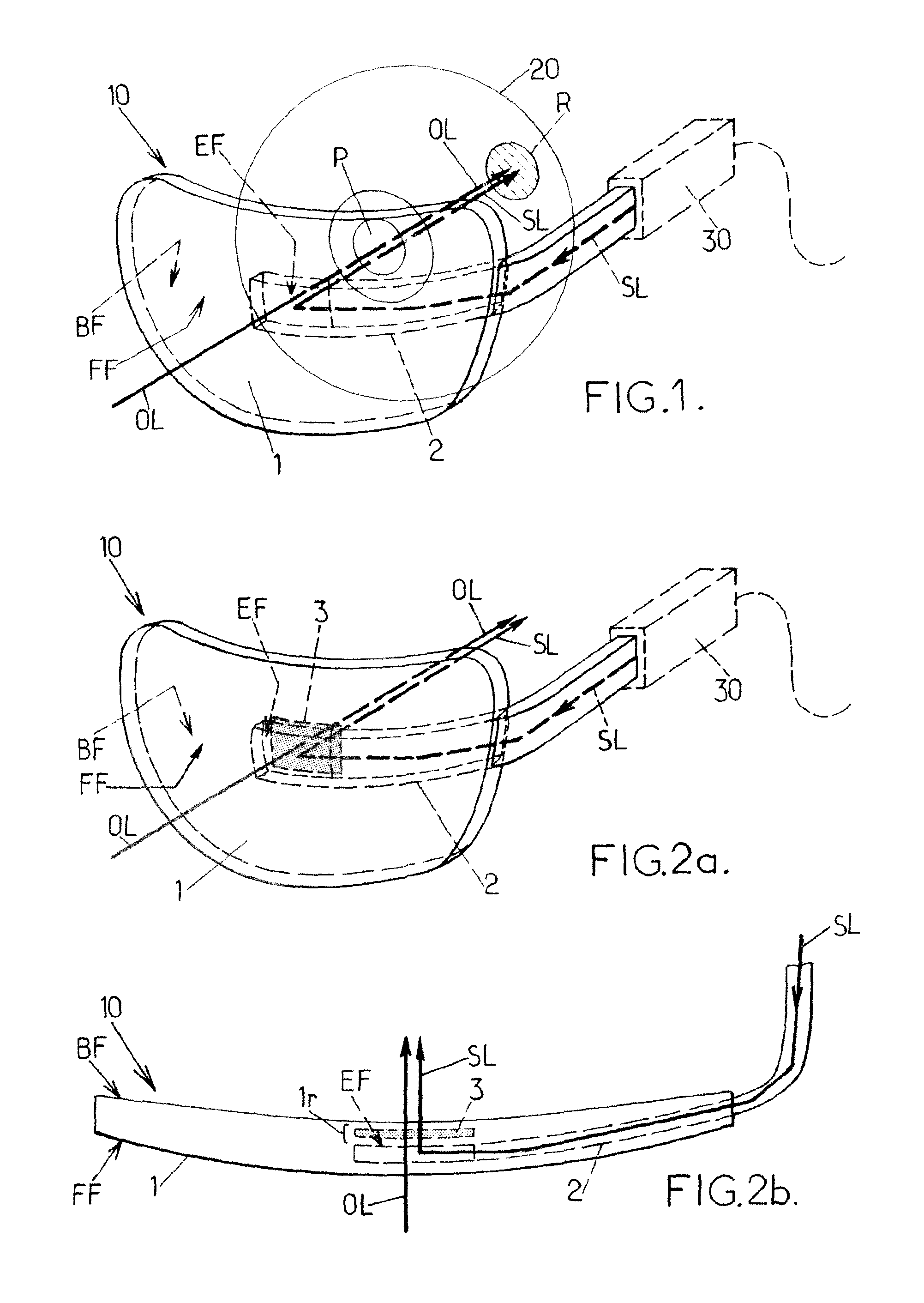Eyeglass adapted for providing an ophthalmic vision and a supplementary vision
- Summary
- Abstract
- Description
- Claims
- Application Information
AI Technical Summary
Benefits of technology
Problems solved by technology
Method used
Image
Examples
Embodiment Construction
[0031]FIG. 1 which relates to prior art has already been described.
[0032]According to FIGS. 2a and 2b, an eyeglass 10 according to the invention comprises the same elements as the eyeglass of FIG. 1, namely the light-refracting transparent material 1 limited by the front face FF and the back face BF of the eyeglass, and the light-conducting element 2 with its exit face EF for the supplementary light SL. The light-conducting element 2 is preferably entirely embedded within the light-refracting material 1, so that a rear portion 1r of the light-refracting transparent material 1 is located between the exit face EF of the light-conducting element 2 and the back face BF of the eyeglass 10. The light-refracting transparent material 1 extends continuously between the light-conducting element 2 and the front face FF.
[0033]The light-refracting transparent material 1 may be any material commonly used in ophthalmics.
[0034]The light-conducting element 2 may be of any design already known and de...
PUM
 Login to View More
Login to View More Abstract
Description
Claims
Application Information
 Login to View More
Login to View More - R&D
- Intellectual Property
- Life Sciences
- Materials
- Tech Scout
- Unparalleled Data Quality
- Higher Quality Content
- 60% Fewer Hallucinations
Browse by: Latest US Patents, China's latest patents, Technical Efficacy Thesaurus, Application Domain, Technology Topic, Popular Technical Reports.
© 2025 PatSnap. All rights reserved.Legal|Privacy policy|Modern Slavery Act Transparency Statement|Sitemap|About US| Contact US: help@patsnap.com



